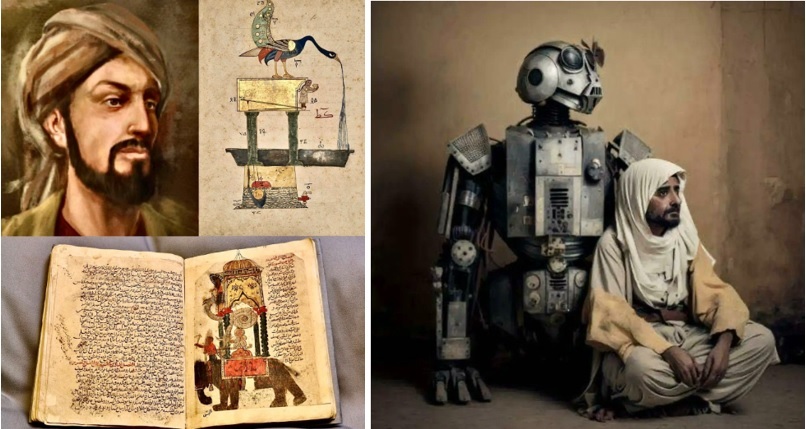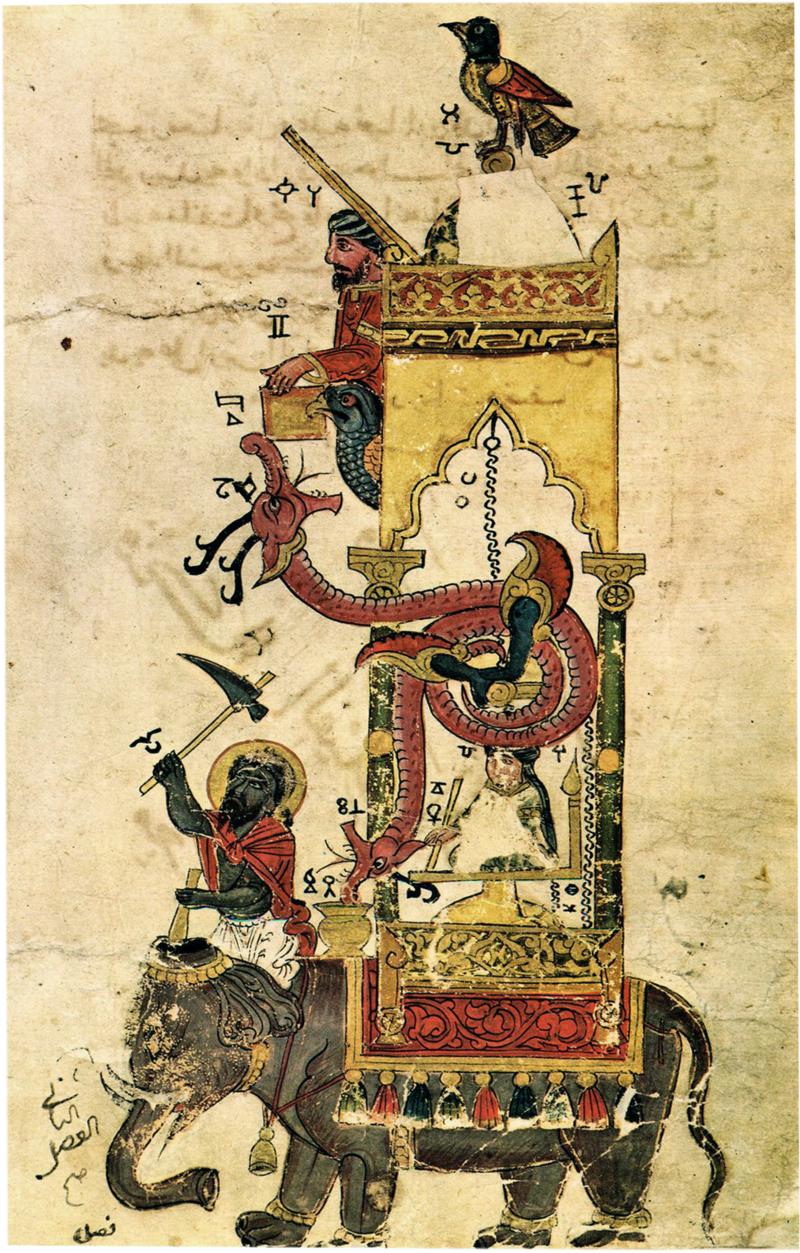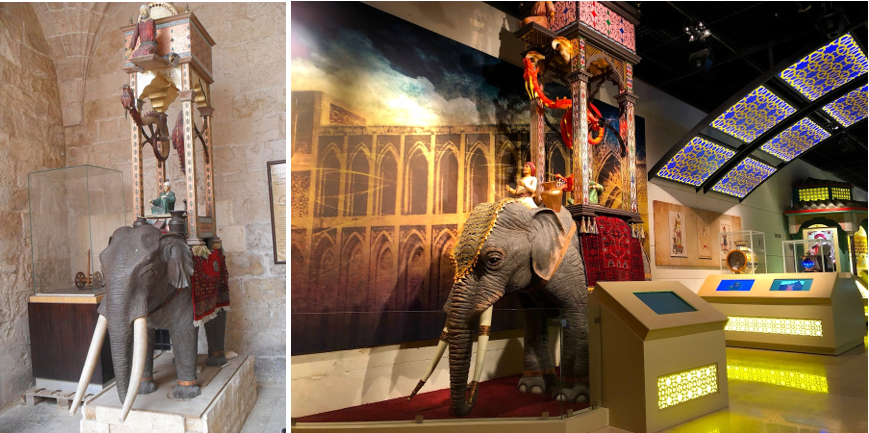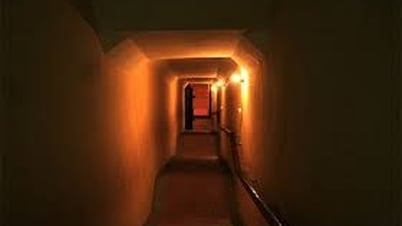About 1,000 years ago, Ismail al-Jazari invented a complicated clock that is commonly known as the "elephant clock".
The design of this clock was detailed in Ismail al-Jazari's book, The Book of Knowledge of Ingenious Mechanical Devices , in which the author writes: "The elephant represents Indian and African culture, the two dragons represent Chinese culture, the phoenix represents Persian culture, the waterworks show Greek culture, and the turban represents Islamic culture…".

In addition to inventing the elephant clock, Ismail al-Jazari is also the “father of robotics.”
Additionally, on the clock we see the image of Salāh ad-Dīn al-Ayyūbi, a Muslim Kurd who liberated Jerusalem from the Crusaders and was the founder of the Ayyubid dynasty of Egypt, a figure whom Ismail al-Jazari greatly admired.
How the "elephant clock" works
According to Wikipedia , the clock's timing mechanism relies on a water-filled bucket hidden inside the elephant. In the bucket is a deep-bottomed bowl floating on the water, with a small hole in the middle. It takes half an hour for the water to fill this hole.
As it sinks, the bowl pulls on a rope attached to a seesaw in the tower (on top of the elephant). This causes the ball to fall into the mouth of a snake, causing the snake to lean forward, pulling on the rope causing the bowl to rise above the water.
Meanwhile, a system of wires causes a figure in the tower to raise its left or right hand and the mahout (the elephant driver in front) hits a cymbal, a mechanical bird cries, announcing that half an hour or an hour has passed. The snake then returns to perform the next cycle.

Sketch of the elephant clock by Ismail al-Jazari

A replica of the elephant clock in Kasımiye Medrese, Mardin, Turkey (left) and another replica at the Islamic Science and Technology Museum in Saudi Arabia
Wikipedia, artsandculture.google.com
Another feature of the clock is to record the elapsed time of the interim hours. The clock has two tanks. The upper tank is connected to the time indicator mechanism, the lower tank is connected to the flow control regulator. At dawn, the tap is opened and water flows from the upper tank to the lower tank through the float regulator to maintain a constant pressure in the receiving tank.
Replicas of the "elephant clock"
Today, Ahmed Salim's 1001 Inventions organization creates modern replicas of the elephant clock. Since 2006, the organization has introduced replica elephant clocks around the world, as part of the 1001 Inventions scienceeducation program .
At the London Science Museum in January 2010, journalist Nick Higham witnessed the elephant clock invented by 1001. The replica clock, which stands 5 metres tall and is still “spectacularly” in operation, is made by the manufacturer and is said to be in full working order. If you visit the Ibn Battuta Mall in Dubai, you can find a full-sized replica of a modern elephant clock in operation.

Sketch of Al-Jazari's "elephant clock" in the Book of Knowledge of Ingenious Mechanical Devices (left) and image of the elephant clock at the Ibn Battuta Mall in Dubai
Another replica of the elephant clock is on display at the Le Locle Clock Museum in the Canton of Neuchâtel, Switzerland. There is also another elephant clock at the Museum of Islamic Science and Technology at the King Abdullah University of Science and Technology in Saudi Arabia.
Ismail al-Jazari (1136–1206) was a Muslim polymath. He was an inventor, mechanical engineer, craftsman, painter, and mathematician from the Artuqid dynasty of Jazira in Mesopotamia. He is best known for his work: The Book of Knowledge of Ingenious Mechanical Devices, written in 1206, which describes 50 mechanical devices, along with instructions on how to build them. In addition to inventing the elephant clock, al-Jazari is also known as the "father of robotics".
Source link



























![[Photo] National Assembly Chairman Tran Thanh Man visits Vietnamese Heroic Mother Ta Thi Tran](https://vphoto.vietnam.vn/thumb/1200x675/vietnam/resource/IMAGE/2025/7/20/765c0bd057dd44ad83ab89fe0255b783)





































































Comment (0)